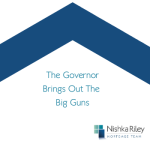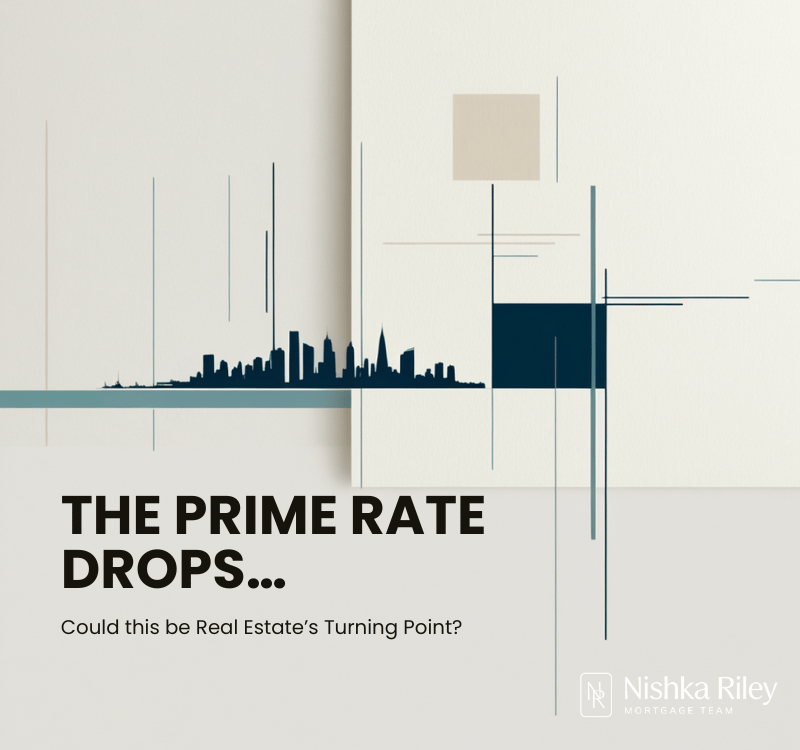
Rate Update – The Governor Administers a Massive Flu Shot
March 4, 2020
Rate Update – The Governor Pulls Out His Wallet
April 15, 2020Warning! This is a long post!
It was requested by quite a few people who read our Facebook Post talking about fixed rates increasing. I’ve tried my best to simplify a highly technical subject/situation into something relevant AND interesting. For those of you with finance backgrounds – I know, I know … there are some gaps. For the rest, I hope you enjoy it. This was actually one of the toughest pieces I’ve had to write!
It’s April 5th, 2020 and as I write this post the Bank of Canada prime rate and government bonds yields are descending at a dizzying pace, and with each rate cut mortgage holders are getting more and more excited thinking, finally, there is a silver lining in all this COVID mess!
The natural next step? Call your mortgage broker, because it must be a great time to refinance! So when my team receives that call and has to educate clients about the interest rate reality that awaits them; the shock that lingers in the silence from the other end of the phone – is almost palatable.
“How could fixed rate mortgages be increasing when prime is dropping?! And why are the banks taking away the variable rate mortgage discount with every cut from the Bank of Canada?!” – they ask! It must be those greedy corporate bankers that you defended in your last rate update – right?! Though that would seem to be a logical answer the real reason is that in a time of crisis, fear takes hold, and fear and money do not mix well.
But before we dive into an explanation of the disconnect in interest rates, we’ll need to cover a little mortgage 101 ( for those of you with kids, apparently you aren’t the only one being homeschooled today )
- Banks Sell Your Mortgage After Funding:
- Contrary to popular belief banks don’t keep your mortgage on their books, they package them up and sell them to pension fund managers, institutional investors and whoever is looking for a steady income stream.
- Banks have to go out into the credit markets and buy the money before they lend it to you:
- This has a cost attached to it, and in a normal market, it’s minimal.
- Banks fund their Variable rate mortgages with short term instruments:
- Banks fund variable rate mortgages with cash flow from bank accounts, GICs and by selling banker’s acceptances’/commercial paper in the treasury markets. ( Think T-bills – without the government guarantee)
- In a rational market, 5 year Government of Canada bonds and fixed mortgage interest rates are positively correlated. The usual pattern is that bonds lead the decline, and fixed mortgage interest rates usually follow about a week to two weeks afterwards. The delay depends on the time of year and competitive forces at play.
So now that we’ve got that covered it’s time to cover investing 101.
- Markets will ALWAYS overreact to perceived future events AND THEN wait in safe assets until confirmation of those assumptions are either realized or dismissed.
- Credit markets ( bonds, T-bills, commercial paper ) is almost double the size of the stock market in asset value
So now that you are armed with the basics of mortgage and investing here is the play, by play of the month of March and the impact that it had on credit markets, where the banks usually reign King.
Stage 1: The Calm Before the Storm – 1st Week of March
At the beginning of March, the stock market was continuing with the selloff that had begun in the last week of February. At this point, both the stock market and the bond market are following a classic pattern of investors taking profits by selling stocks and waiting it out in bonds. As investors move from stocks to bonds, the bond yields drop and the stage is set for mortgage interest rates to follow. The credit markets are functioning normally.
Stage 2: The Bank of Canada Cuts Rates by 50 bps. The virus spreads and Italy becomes a news item – 2nd Week of March
As news of the virus spreading through Italy escalates, so does the stock market sell off, which causes the rally in bonds to sharply increase. As a result, bond yields ( the net interest rate of a bond ) drop to historic lows. The BOC decreases the rate with an aggressive 50bps rate cut in anticipation of a slowing economy. The cost of funding a mortgage has filtered down to the segment of the credit market where banks operate and the banks dramatically lower fixed rate mortgages given they now have access to cheap money. At this point, the credit markets are still functioning normally, everyone is cautiously calm and drawing comparisons to SARs and other viruses – we’ve got this….and then Friday the 13th comes…
Stage 3: The Federal Reserve drops prime by 50bps – 3rd Week of March
In an unprecedented move, the Federal Reserve drops rates on a Friday afternoon and three days later the Bank of Canada follows. It sends a clear signal to the world – we are in trouble. The phrase “social distancing” takes shape, and with it comes the realization that the modern economy as we know it is about to go grind to a halt like North Shore Traffic on a long weekend when both bridges are closed. In this moment, every CEO, CFO and senior executive who has been through 2008/2009 financial crisis, can see what’s coming next. If history repeats itself, they know that credit markets are going to dry up, and nobody is going to want to lend money to one another and that banks are going to need money for their own operations.
At this point the banks are nervous, but they are covered. They still have access to the cheap money that they secured in the 2nd week of March, but they know it’s going to run out fast.
By the end of the week, the speed at which money flows from bonds to government short term investments ( T-Bills and any federal or provincial bond that has is maturing in the next 90 days) increases at an exponential rate. The banks get a lifeline from the government allowing them to ease up their capital requirements ( ie access their rainy day fund ) and the government also offers to buy back some of the bank’s AAA credit rated mortgages. However, that lifeline comes at a tremendous cost … they have to allow customers to skip up to 6 months of mortgage payments. At this point the credit crunch becomes real.
Stage 4: The interest rate paradox – 4th Week of March
In the final week of March, the reality starts to set in and the credit markets are scared. Any debt that is not backed by the government is perceived too risky to hold. Money leaves everything not backed by the government and flows to government secured debts. As a result, the interest rate on government debt falls to generational lows. News outlets around the world talk about how “low” government bonds are. Meanwhile the cost of funding short term corporate debt, the “well” that banks run to on a daily basis, triples during this week. Payroll deposits to bank accounts dramatically slow and GICs start being redeemed – two key sources of funding for the banks. Compounding the issue is the 6 month mortgage deferral program has to be funded by the banks’ own money, which causes even further strain on the bank’s operating costs/cash flow. Banks are not the only one caught in this cash flow crunch, business are liquidating their short term investments and keeping the cash on hand to fund operations and keep employees on staff.
At this point, the laws of supply and demand step in and the cost of funding non-government backed debt shoots up and with it the cost of funding a mortgage. Et Voilà – confusion about mortgage rates ensues!
I know what you are thinking, and here are the answers to the tough questions:
- Will the fixed mortgage rates continue to increase?
- Possibly, but not by much. Rates are being impacted by fear so once we start hearing some good news and the fear subsides, rates will improve. This is the one time I will go against my “Bad News for the Economy is Good News for your mortgage” rule of thumb – in this case, the opposite is true.
- Are the banks ok?
- Yes! Since 2012 the various finance ministers have put measures on the banks to build up their “rainy day fund” and shifted a lot of the credit risk on to the investor markets.
- Will the housing market crash?
- A slow down is possible, however from November 2019 to March 2020 the number of people getting pre-approved has been at an all time high. Who are these people? The first wave of the Millenials – the largest demographic in North America since the boomers! Once the things return to normal, they will resume their desire to own their own home.
I hope that provides you with some clarity/peace of mind with what is going on. Though these are unusual times, there are opportunities coming. The Bank of Canada is going to keep its foot pinned to the gas pedal and keep rates low as long as it possibly can. What this means is that the housing market is about to get boost like never seen before.
Stay safe, and stay tuned for more updates!





